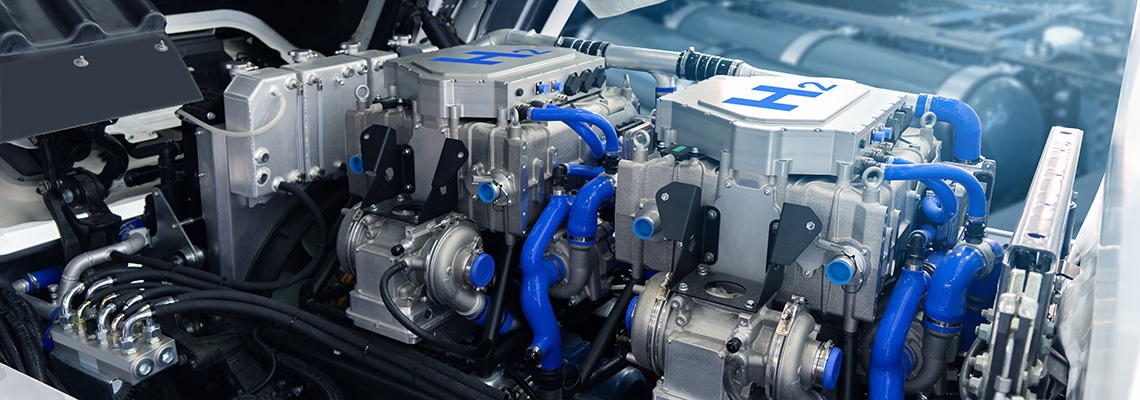Dieselgate 2.0: 600K Ram Trucks Recalled
Engine maker Cummins is recalling 600,000 Ram trucks as part of a huge US$2 billion settlement with federal and California authorities for using illegal software to cheat results of diesel emissions tests.

2024-01-19
Engine maker Cummins is recalling 600,000 Ram trucks as part of a huge US$2 billion settlement with federal and California authorities for using illegal software to cheat results of diesel emissions tests.
Research by IDTech predicts that by 2044, hydrogen fuel cell cars will represent only about 4% of the total zero-emission passenger vehicles market. While the research predicts that hydrogen fuel cell cars would be a “very small portion” of the car market, IDTech also forecasted that about one fifth of zero-emission trucks would run on hydrogen.
Greater upfront costs for FCEVs over both combustion engine vehicles and BEVs, and increasing running costs makes an fuel-cell car a hard sell for consumers. IDTech cited lack of hydrogen refueling as a significant factor holding back FCEV
Euromonitor International has released the results of its Electric Vehicle Readiness Index for 2023 survey, which evaluates the most prepared countries which can support widespread EV adoption.
Norway, Switzerland and Sweden ranked at the top of the index, due to EV market maturity and consumer buying power. Brazil, South Africa and India were ranked at the bottom, owing to limited government incentives, low incomes and the undersupply of public charging stations
Battery development news continues to lead the way in the current issue of the Alternative Power Report produced by Power Systems Research. In this issue, read articles about silicon anode powder used in batteries and a new cathode material that provides cheaper and more sustainable power. This issue contains news about government regulations aimed at EVs and GM and Komatsu joining forces to produce hydrogen powered mining trucks.
As of Jan. 1, 2024, the French government has revised its “malus écologique”, a one-time penalty tax for registering bulky, CO2-emitting cars, to include many more ICE vehicles, even some of the most popular budget models.
Drivers of cars emitting 118 g/km of CO2 pay €50 (about $55), and this increases rapidly with higher CO2 emissions, with a maximum ceiling for vehicles reaching €60,000 ($65,590). Vehicles weighing 1,600 kg/1.6 tons or more will have to pay between €10 and €30 per additional kilo.
2024-01-18
General Motors and mining and construction equipment giant Komatsu plan to jointly design and validate the hydrogen fuel cell technology for the 930E electric drive mining truck. GM has been conducting hydrogen fuel cell research and product development for more than 50 years and has developed platforms for both lithium-ion batteries and hydrogen fuel cells.
2023-12-17
A few years ago, the idea of manufacturing EV batteries in the US was fraught with hurdles, the key issue being the absence of a domestic lithium pipeline. The US had earned a reputation as the biggest producer of lithium in the world, as well as the biggest user of lithium in the world (it was even used in the drink 7Up), but this growth stopped over health concerns and the US dwindled down to just one operation by the time the EV market took off.
The lithium supply chain is still problematic to the extent that it involves digging new surface mines, but an alternative solution has been emerging in the form of geothermal brine, and the US Department of Energy is pulling out all the stops to promote it. In 2020, the US Geological Survey identified five states with major deposits: Arkansas, California, Nevada, North Carolina, and Utah.
Thanks to a variety of factors (mostly base economics), lithium-ion battery packs are at record low prices. After dropping 14%, they are down to $139/kWh vs 2022. Prices for key battery metals, especially lithium, have fallen sharply since January, due to significant growth in production capacity in all parts of the battery value chain, from raw materials and components to cells and battery packs.
The steep price drop and record low average price come on the heels of price increases in 2022 that had brought battery prices back to 2020 levels. 10 Years ago, battery packs (including cells) cost $780 per kwh. These figures represent an average across multiple battery end-uses.
CATL, the worlds largest battery manufacturer, is not waiting for customers to come knocking on its door to buy batteries for their electric models. It has created what it calls its CATL Integrated Intelligent Chassis, a skateboard design that incorporates all the bits and pieces needed to make a fully functional electric car
Source: CleanTechnica: Read The Article